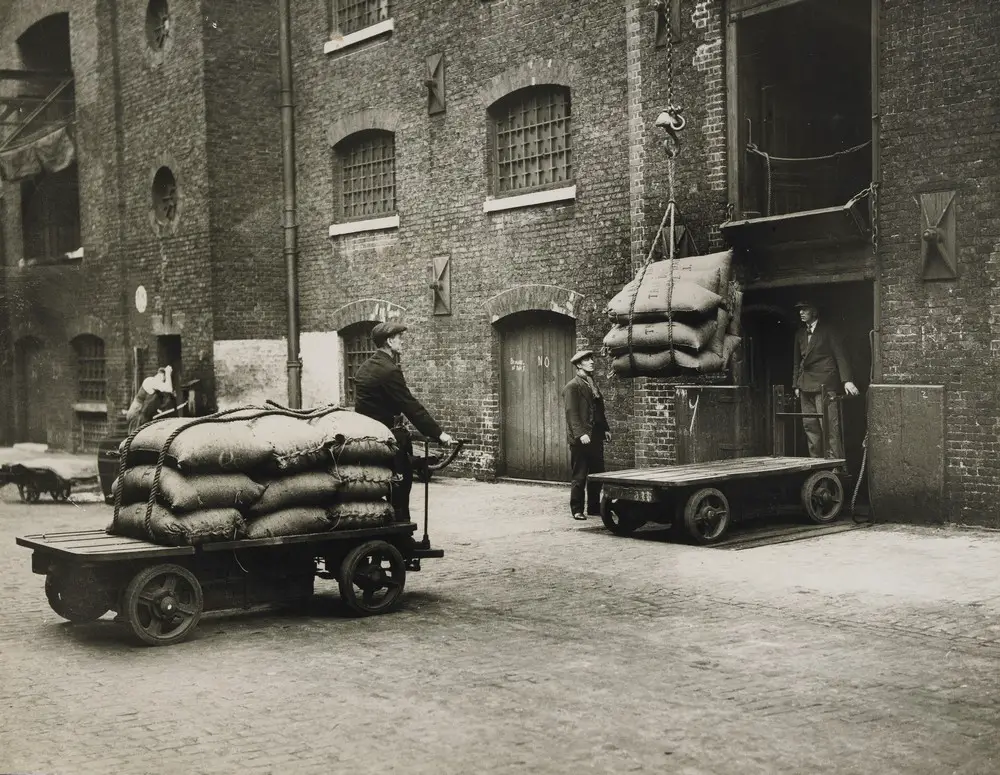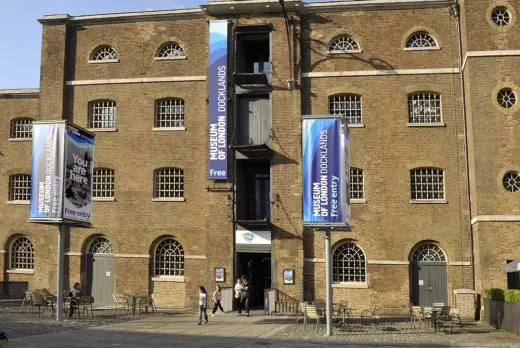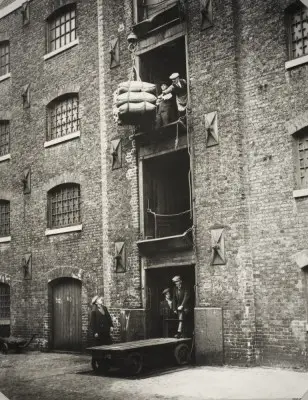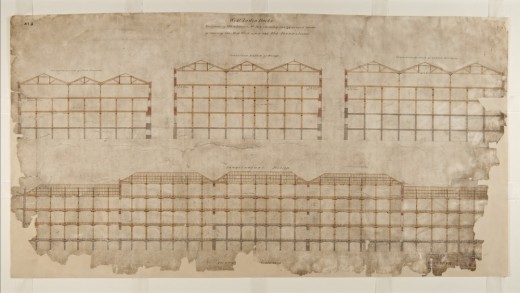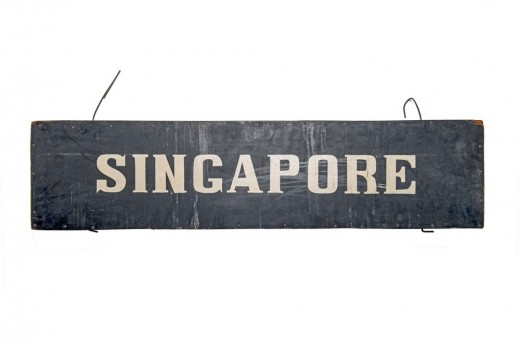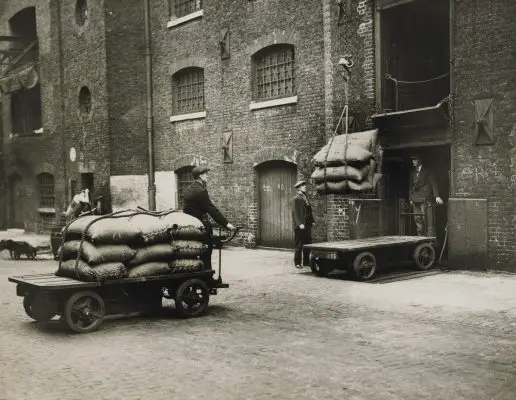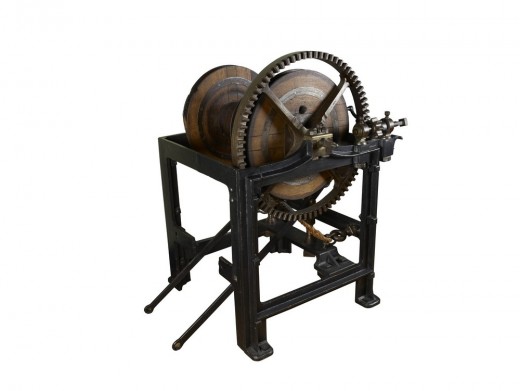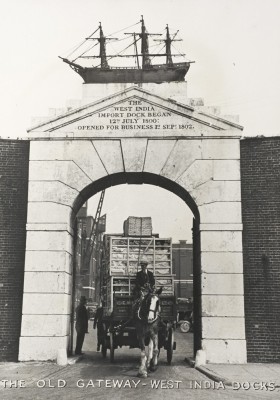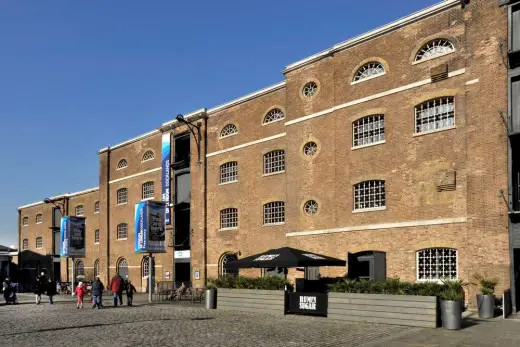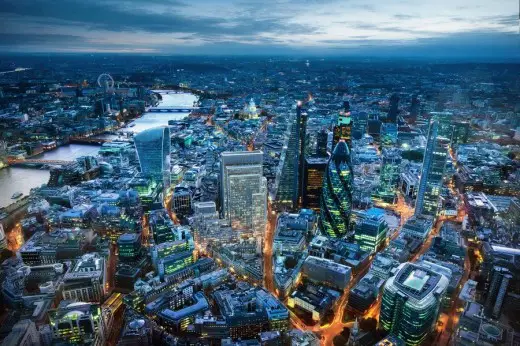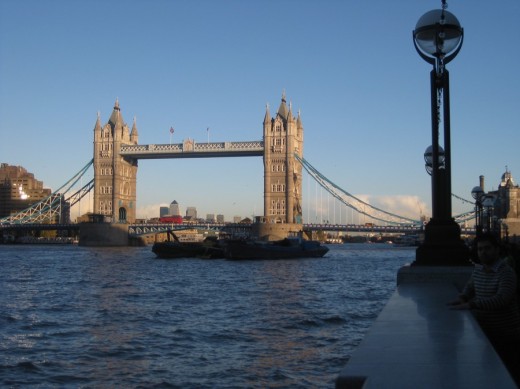Museum of London Docklands, Isle of Dogs Building, Design Event, Exhibition, Review
Museum of London Docklands
River Thames History, West India Quay, Isle of Dogs, England, UK – Event
Bridge Multi-media Art Exhibition
Major New Gallery at Museum of London Docklands Explores History of the Largest Docks in the World
29 Jun 2014 + 10 Mar 2016
Museum of London Docklands, Isle of Dogs
Opens Friday 25 March 2016
A rare survivor of London’s historic docks will be celebrated by a major new gallery opening at the Museum of London Docklands on 25 March; the first part of a major development to transform the Museum of London Dockland’s galleries.
No.1 Warehouse, the new permanent gallery, focuses attention on the Grade 1 Listed Museum of London Docklands building itself. Originally called No 1 Warehouse, the museum building was part of the West India Docks, London’s first enclosed dock system. A walled and gated compound, the West India Docks provided a secure environment within which cargoes could be loaded, unloaded and stored. Established in 1802, they were the first stage in the proliferation of early 19th century dock building in the east of London.
The new gallery aims to reveal the inner workings of London’s docks and warehouses. It will bring this story to life using a powerful combination of historic equipment and machinery which performed the day-to-day work of the docks, as well as oral histories, historic images, film and the remarkable building itself.
The West India Docks were a hive of activity in which dockers, merchants, clerks, warehousemen and coopers combined to operate the busiest docks in the world, accommodating over 600 vessels. At its height, No.1 Warehouse was piled high with valuable cargoes from around the world including sugar, rum, tobacco, spices, coffee, timber and wine. Cargoes were constantly on the move as they were winched from the holds of ships, to the quayside and straight into the warehouses via loophole doors. This process went on daily for nearly 200 years, helping to establish London as a major world city, until the advent of shipping containers forced the dock’s closure in 1980.
Among the most visually impressive items on display will be the beautifully made pieces of equipment which were the working tools of the dock: 19th century iron beam scales which hung from the ceiling timbers and weighed large items or quantities, large wooden cargo casks, elaborately braided ropework baskets and iron hand winches will give a palpable sense of the scale of the everyday operation. These objects will be on open display so as to convey their physicality: they were working tools and equipment which, throughout their working lives, needed to be pushed, lifted, swung, hauled, dragged, and often by hand at that.
Smaller items include an early 19th century bronze call-on bell, which sounded the dock’s opening and closing times; a lifesize wooden sculpture of a sailor at the wheel of a ship, the trademark of mast maker Bawn & Co; iron ring weights; tobacco trolleys, meat carts, and cut away models of the docks, illustrating the activity taking place on each floor.
Perhaps the finest exhibit is the building itself, designed by George Gwilt and his son; with its loophole doors on each floor, security windows with spiked cast iron frames and timber columns, the warehouse is an impressive relic of a lost era. With the new gallery development, visitors will for the first time be able to look out on to the quay through the historic loophole windows.
Francis Marshall, Senior Curator at the Museum of London, said “The new No.1 Warehouse gallery is the first major redevelopment of our galleries since London, Sugar and Slavery opened in 2007. It tells a story unknown to many, but which underpins the development of this city. We’re thrilled to be using this opportunity to focus on such an important piece of London’s history, and with such significance for our local area.”
The new No.1 Warehouse gallery was made possible thanks to generous supporters including; DCMS/Wolfson Museums & Galleries Improvement Fund, Arts Council England and The Foyle Foundation. The gallery contains numerous materials from the Port of London Authority archive.
Open Bridge over London
27 July – 2 November 2014
Museum of London Docklands at West India Quay
Museum of London Docklands
Following last year’s exhibition entitled Estuary, the Museum of London Docklands is following up its interest in the water and the city of London by launching its multi-media art exhibition, Bridge. The press event took place on the warm and hazy morning of 19 June aboard the Cyclone Clipper, which took its passengers first upriver from London Bridge City Pier to Vauxhall and back downriver to Tower Pier where the event terminated.
An overview of the context and content of the forthcoming exhibition was given by David Spence, Director of Transformation at the Museum of London Docklands.
Prominent among guest speakers was Dan Cruickshank, well known architectural historian and an authority on the breadth and depth of historical London. He spoke with enthusiasm, yes, with passion, which at times left him breathless. He spoke about the vitality of the river and the vitality that it imparts to London. It presents challenges, great challenges that have been answered since the time of the Romans by innovation in construction and engineering.
Early bridges, in their defiance of nature (seen as God’s will) became regarded as sacred in themselves, and some of this mysticism has been retained to the present day. “Bridge” is both a noun (an object) and a verb (an action). Cruickshank’s flowing narrative made this duality clear as we passed under one, then another of the numerous structures that span the river.
Francis Marshall (Curator of Art, Museum of London) reminded us that “the river opens the city up… it slices the city up,” revealing a vast panorama. But the bridges reunite the two sides, the north bank and the south bank, making the city whole. Marshall referred to William Wordsworth’s “Composed Upon Westminster Bridge”:
Earth hath not anything to show more fair:
Dull would he be of soul who could pass by
A sight so touching in its majesty:
This City now doth, like a garment, wear
The beauty of the morning; silent, bare,
Ships, towers, domes, theatres and temples lie
Open unto the fields, and to the sky;
All bright and glittering in the smokeless air.
Never did sun more beautifully steep
In his first splendour, valley, rock, or hill;
Ne’er saw I, never felt a calm so deep!
The river glideth at his own sweet will:
Dear God! The very houses seem asleep;
And all that mighty heart is lying still!
Marshall seemed to suggest an elaboration of Wordswoth’s silence in his reference to a film by William Raban – slowly gliding along the Thames, drums beating as oar-beats, their varying reverberations of sound as the boat passes under the river’s bridges.
Bridge is an art exhibition, which celebrates London’s bridges. It contains paintings, etchings, drawings, and photographs of London’s bridges from the Eighteenth Century to the present. There are works by a number of contemporary artists. Lucinda Grange presents a series of photographs that she has taken while climbing on and inside bridges, poetic documentation of that which is seldom seen. Scanner (Robin Rimbaud) will present his interactive-international “river of voices” in September. This is definitely an exhibition that one would not want to miss.
Museum of London Docklands – Bridge Multi-media Art Exhibition, press event film:
Film on YouTube
As we disembarked, Daniel Cruickshank quietly voiced his regret that he had not been able to recite some lines from T S Elliott’s “The Wasteland”. Perhaps these are what he had in mind (my apology if I am wrong):
The river sweats
Oil and tar
The barges drift
With the turning tide
Red sails
Wide
To leeward, swing on the heavy spar.
The barges wash
Drifting logs
Down Greenwich reach
Past the Isle of Dogs.
Weialala leia
Wallala leialala
Elizabeth and Leicester
Beating oars
The stern was formed
A gilded shell
Red and gold
The brisk swell
Rippled both shores
Southwest wind
Carried down stream
The peal of bells
White towers
Weialala leia
Wallala leialala
Jane Lomholt for e-architect
Bridge Museum of London Docklands
The Museum of London Docklands is a museum on the Isle of Dogs, east London that tells the history of London’s River Thames and Docklands.
Address: 1 Warehouse, West India Quay, London E14 4AL
Phone: 020 7001 9844
Opening Hours: 10:00 am – 6:00 pm, check with operator
Architectural style: Georgian
Opened: 2003
Location: 1 Warehouse, West India Quay, London, E14 4AL, England, UK
London Buildings
Contemporary London Architecture Designs
London Architecture Designs – chronological list
London Architectural Tours – tailored UK capital city walks by e-architect
Canary Wharf and Rotherhithe Bridge in London
Key Contemporary Buildings on the River Thames
Canary Wharf Tower
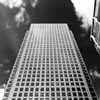
photograph © Jason Baxter
20 Fenchurch Street Building
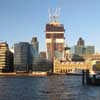
photo © Adrian Welch
River Thames Buildings
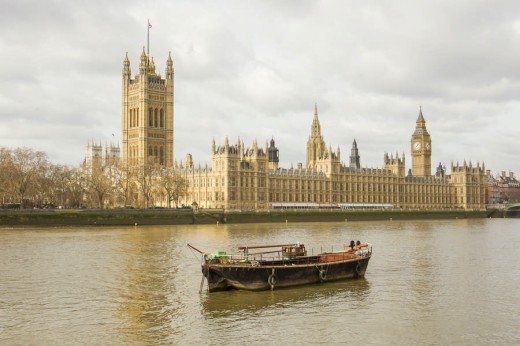
photo from PW
City of London Buildings
The Scalpel
Design: Kohn Pederson Fox – KPF
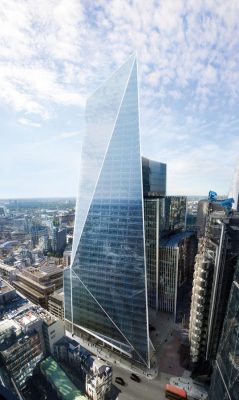
image courtesy of the architects
The Scalpel City of London Skyscraper
Comments / photos for Museum of London Docklands – Isle of Dogs Design Exhibition page welcome

